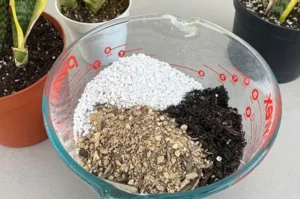Snake plants, also known as Sansevieria or Dracaena trifasciata, are popular for their toughness and easy-care nature. They are native to parts of West Africa, where they thrive in dry, hot climates. But many plant lovers wonder: can snake plants tolerate full sun?
Let’s dive deep into how much sun a snake plant really needs, how it reacts to full sunlight, and the best lighting conditions for healthy growth.
Understanding Snake Plant Light Requirements
Snake plants are well known for adapting to different lighting conditions. You can place them in low-light corners, near bright windows, or even outdoors during warmer months. However, that doesn’t mean they prefer every light situation equally.
- Low light: Snake plants survive but grow slowly.
- Indirect bright light: Ideal for lush, healthy growth.
- Full sun: Possible but with some precautions.
Can Snake Plants Grow in Full Sun?
Yes, snake plants can tolerate full sun, but not all types or environments are the same. If your snake plant has been indoors in indirect light and you suddenly move it to a spot with direct sunlight for hours each day, it may suffer from sunburn or leaf discoloration.
Effects of Full Sun on Snake Plants
Here’s what happens when snake plants are exposed to full sun for extended periods:
1. Sunburn and Scorching
Too much direct sunlight can cause the leaves to turn yellow, brown, or develop crispy tips. The chlorophyll in the leaves breaks down, leading to discoloration and damage.
2. Drying of Soil
Snake plants are drought-resistant, but full sun can dry out the soil too quickly. This can stress the plant, especially if you’re not watering regularly.
3. Color Fading
The natural green or variegated patterns of the snake plant may fade if the plant is constantly exposed to harsh sun.
How to Acclimate Snake Plants to Full Sun
If you want to grow your snake plant in full sun, here’s how to do it safely:
Step 1: Gradual Exposure
Move your plant outdoors for a few hours a day, slowly increasing exposure over 7–10 days. This allows the plant to adapt without shock.
Step 2: Use Morning Sunlight
Early morning sun is softer and less damaging. Avoid harsh afternoon sunlight, especially in summer.
Step 3: Provide Partial Shade
If your area gets intense sunlight, use a shade cloth or place the plant near other taller plants or furniture that provides partial cover.
Step 4: Monitor Soil Moisture
Check the soil often. If it’s drying too quickly, increase watering frequency slightly—but don’t overwater.
Best Snake Plant Varieties for Sunny Locations
Some snake plant varieties handle the sun better than others. Here are a few sun-tolerant Sansevieria types:
- Sansevieria cylindrica – Thicker, cylindrical leaves resist heat better.
- Sansevieria laurentii – A popular variety with yellow margins, it adapts well to outdoor light.
- Sansevieria zeylanica – Hardy and forgiving, it can handle full sun with proper care.
Indoor vs. Outdoor Light Conditions
Indoor
Indoors, snake plants do best near windows that get bright, filtered light. East or north-facing windows are ideal. Avoid placing them right against south-facing windows unless there’s a sheer curtain.
Outdoor
If you’re placing the plant outside, make sure the temperatures stay above 50°F (10°C) and avoid heavy rain or frost. Outdoor sun can be stronger than indoor lighting, so keep that in mind.
Common Mistakes to Avoid
- Sudden shift from low light to full sun
- Overwatering after sun exposure
- Ignoring signs of leaf damage
- Living in scorching heat for too long
By avoiding these errors, your snake plant will have a better chance of surviving and thriving under full sun.
Frequently Asked Questions (FAQs):
Can I leave my snake plant outside all day?
Yes, but only after proper acclimation. Full sun all day can cause stress if the plant isn’t used to it.
How do I know if my snake plant is getting too much sun?
Look for signs like yellowing leaves, brown tips, or faded colors. These are indicators of sun damage.
Is it okay to grow snake plants on a balcony?
Yes, balconies with filtered sunlight or partial shade are great. Just watch out for midday sun.
Conclusion
Snake plants are versatile, hardy houseplants that can survive in many lighting conditions, including full sun. However, it’s crucial to introduce sunlight gradually and monitor their response to avoid leaf damage. Aim for bright, indirect light for best results, but if full sun is your only option, follow the right care steps to keep your plant healthy.
Whether you’re growing them indoors or outdoors, snake plants reward you with their air-purifying beauty and low-maintenance charm. Just remember, even the toughest plants need a little TLC in the sun!






